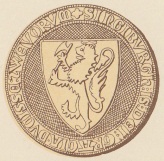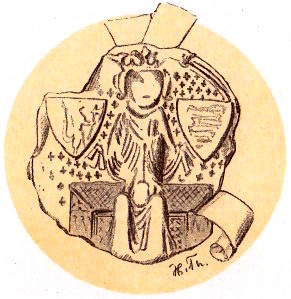 W
WAudun Hugleiksson (Hestakorn) was a Norwegian nobleman at the end of the 13th century. He was the king's right hand, both under King Magnus Lagabøte and King Eirik Magnusson. He was seen as an important politician and lawman in his time and played a central role in reforming the Norwegian law system.
 W
WBlanche of Namur was queen of Norway and Sweden as the wife of King Magnus VII / IV.
 W
WHaakon V Magnusson was king of Norway from 1299 until 1319.
 W
WHaakon VI of Norway, also known as Håkan Magnusson, was King of Norway from 1343 until his death and King of Sweden between 1362 and 1364. He is sometimes known as Haakon Magnusson the Younger to distinguish him from his great-grandfather, Haakon V.
 W
WIngeborg Eriksdottir was a Norwegian princess and a Swedish duchess. She was Duchess of Uppland, Öland and Finland. As a widow, she had a seat in the regency government of her nephew Magnus, who reigned as king of both Sweden and Norway.
 W
WIngeborg of Norway, was a Norwegian princess and by marriage a Swedish royal duchess with a position in the regency governments in Norway (1319–27) and Sweden (1319–26) during the minority of her son, King Magnus of Norway and Sweden. In 1318–1319, she was Sweden's de facto ruler, and from 1319 until 1326, she was Sweden's first de jure female regent.
 W
WMagnus IV was King of Sweden from 1319 to 1364, King of Norway as Magnus VII from 1319 to 1355, and ruler of Scania from 1332 to 1360. By adversaries he has been called Magnus Smek.
 W
WMargaret I was Queen of Denmark and Norway from 1387 and Queen of Sweden from 1389 until her death, and the founder of the Kalmar Union that joined the Scandinavian kingdoms together for over a century. Margaret was known as a wise, energetic and capable leader, who governed with "farsighted tact and caution," earning the nickname "Semiramis of the North". She was derisively called "King Breechless", one of several derogatory nicknames invented by her rival Albert of Mecklenburg, but was also known by her subjects as "the Lady King", which became widely used in recognition of her capabilities. Knut Gjerset calls her "the first great ruling queen in European history."
 W
WOlaf II of Denmark was king of Denmark as Olaf II from 1376 and king of Norway as Olaf IV from 1380, reigning in both kingdoms until his death. Olaf was the son of Queen Margaret I of Denmark and King Haakon VI of Norway, and grandson of kings Magnus IV of Sweden and Valdemar IV of Denmark.
 W
WPhilippa of England, also known as Philippa of Lancaster, was Queen of Denmark, Norway and Sweden from 1406 to 1430 by marriage to King Eric of the Kalmar Union. She was the daughter of King Henry IV of England by his first spouse Mary de Bohun and the younger sister of King Henry V. Queen Philippa participated significantly in state affairs during the reign of her spouse, and served as regent of Denmark from 1423 to 1425.
 W
WOtte Rømer was a Norwegian nobleman, state councilor, and landowner. He is associated with establishing his family ownership of Austrått estate in Ørland, Sør-Trøndelag, Norway.